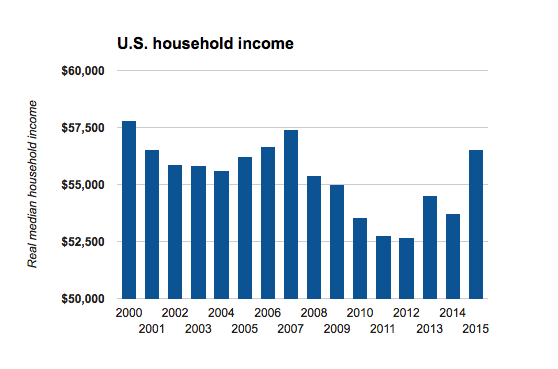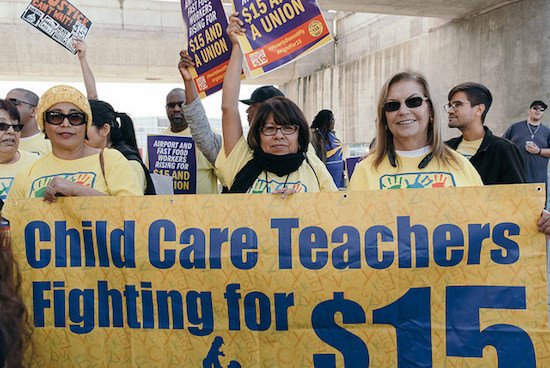When Donald Trump campaigned as a brash billionaire willing to drain the swamp in D.C. in order to “Make America Great Again,” he knew that he’d hit a nerve early on and that the economic anxieties running throughout Middle America painted a reality far different than the job growth data suggests from the past 8 years.
Make no mistake, however, President Obama did indeed preside over unprecedented job growth and technological upheaval. During his tenure, consumers gained confidence, home values rose, and the unemployment rate was cut in half.
Smartphones — once a luxury — now account for nearly 70 precent of all mobile devices in America. High-speed internet reaches more corners of the nation than ever before, and many new tech jobs were created as millennials graduated college
About those jobs

The average income in American households in 2015 rose to $56,516, according the U.S. Census Bureau, while poverty rates dropped 1.3 percent from the year before to 13.5 percent.
However, since its peak in the 1970s, American manufacturing has slashed an overwhelming 7 million jobs — and the Rust Belt states who turned away from Obama and the Democrats this past fall definitely took notice.
Obama likes to tout the 73 million jobs gained since his first election, but only 40,000 of those were “make stuff” jobs while a net loss of 122,000 hit the manufacturing sector. Less than half of the jobs created over the past eight years were high wage, and nearly half of recent college graduates remained underemployed in 2016. Those same students are under the burden of a collective $1.26 trillion in student loan debt.

Wikimedia Commons
The good and bad along with income inequality
Not only were many of the job gains in sectors like food, service and hospitality — and economists are quick to note the productivity slowdown associated with a transition from world power to service economy.
By 2014, the bottom half of income earners have seen the portion of their incomes slide from 19.9 percent of the total pie to 12.5 percent since the Ronald Reagan years.
The gap between the rich and poor in this country is nothing new, but just how much the income disparity has changed over the years is shocking: Along with the disappearance of stable careers, the middle class in America is shrinking and the national debt has ballooned by 95.3 percent to more than $60,000 per person.
There is a silver lining, however, as many Americans were lifted out of poverty under Obama following the Recovery Act of 2009, and stock prices are way up for investors who had seen their portfolios tumble into free fall at the height of the Recession.
The 2.4 percent growth in GDP is also the fourth lowest of any president.
Obama’s policies and the working class
In addition to passing the stimulus bill to stop America’s economic downturn, Obama also passed earned income and child tax credits which overwhelmingly benefitted low income earners and modest families.
At some point many people quit looking for work, as indicated by the huge dip in participation of the civilian labor force. A big portion of millennials were also exempted from traditional company benefits, through the surge in independent contractor work that has the tradeoff of remote work and flexible schedules.
Both phenomena are just two in a number of reasons the Affordable Care Act was passed in order to insure 20 million more Americans — although the biggest burden of the program has bee placed on the middle-class, which has seen health care costs skyrocket.

Flickr/Annette Bernhardt
To combat rising costs, Obama has helped workers in a couple more ways.
First, he signed an executive order ensuring all federal employees make $10.10 an hour, setting the stage for states to fight for higher minimum wages. Second, he guaranteed all workers hitting 40 hours a week making up to $47,476 are guaranteed overtime pay — double the old threshold.
“The American people want to work,” Vice President Joe Biden recalled of the deal. “They want a fair shot. No handouts, no guarantees. Just a good job at a fair wage.”
